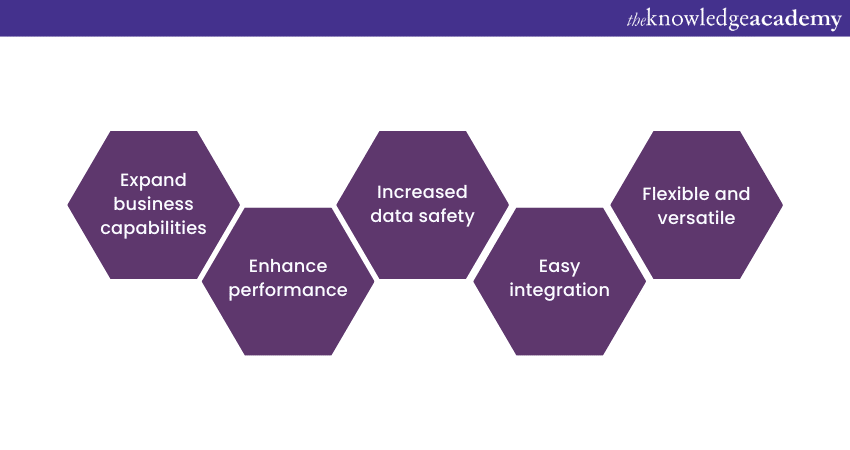We may not have the course you’re looking for. If you enquire or give us a call on 01344203999 and speak to our training experts, we may still be able to help with your training requirements.
Training Outcomes Within Your Budget!
We ensure quality, budget-alignment, and timely delivery by our expert instructors.

In today's data-driven world, businesses rely on efficient management of vast amounts of information. Microsoft SQL Server plays a crucial role as a leading relational database management system. Learning What is Microsoft SQL Server and how it works can help you harvest its full potential.
According to Statista, Microsoft SQL is one of the top three most popular Relational Database Management Systems (RDBMS) in the globe. It has many benefits and capabilities and is used extensively by many organisations. In this blog, you will learn What is Microsoft SQL Server, how it works, its key features and capabilities, as well as its applications.
Table of Contents
1) An introduction to Microsoft SQL Server
2) Key features and capabilities of SQL
3) How does the Microsoft SQL server work?
4) Applications of Microsoft SQL
5) Conclusion
An introduction to Microsoft SQL Server
Microsoft SQL (MSSQL) Server is a comprehensive relational database management system (RDBMS) developed by Microsoft. SQL Server is widely used across various industries and organisations due to its powerful features, flexibility, and integration capabilities. It serves as a robust and scalable platform used for the following tasks:
a) Storing: It efficiently handles vast amounts of structured and unstructured data, providing businesses with reliable and optimised data storage solutions.
b) Managing: With Microsoft SQL Server, businesses can effectively manage their data. Moreover, it ensures data integrity, security, and seamless data operations throughout the database lifecycle.
c) Retrieving: It enables smooth retrieval of structured and unstructured data. It offers powerful querying capabilities that allow businesses to efficiently extract specific data subsets for analysis, decision-making, and reporting purposes.
SQL Server utilises the Structured Query Language (SQL) as its primary language for interacting with the database and performing data operations. It provides a secure and reliable database solution that ensures data integrity, accessibility, and performance.

Key features and capabilities of SQL
At its core, MSSQL Server is designed to handle the challenges associated with data management in modern business environments. Here are its key features and capabilities:

Relational Database Management System
SQL Server follows the relational model, allowing users to define relationships between data tables and establish data integrity constraints. It provides efficient data storage, retrieval, and manipulation capabilities.
Scalability and performance
SQL Server offers scalability options to handle increasing data volumes and user concurrency. It employs various techniques such as partitioning, indexing, and query optimisation to ensure optimal performance even with large datasets.
Security
SQL Server implements robust security measures to protect sensitive data. It supports user authentication and authorisation, role-based security, and encryption mechanisms to safeguard data from unauthorised access.
Integration with other Microsoft products
As a Microsoft product, SQL Server seamlessly integrates with other Microsoft technologies and tools. It allows for easy data sharing and collaboration across different applications within the Microsoft ecosystem.
Support for different data types
MS SQL Server supports a wide range of data types, including numeric, string, date and time, spatial, and XML. This flexibility enables users to store and manipulate diverse data formats.
SQL qualities
SQL Server adheres to the ACID (Atomicity, Consistency, Isolation, Durability) properties, ensuring data consistency and transactional integrity. It provides robust transaction management capabilities to handle concurrent data operations effectively.
SQL Server is continuously evolving, with new versions and updates released regularly, introducing enhanced features, performance improvements, and security enhancements. It caters to the evolving needs of businesses and provides a reliable foundation for data-centric applications and systems.
Unlock the power of MySQL and enhance your data management skills with our Introduction To MySQL Course - Signup today!
How does a Microsoft SQL server work?
MS SQL Server operates through a combination of architecture, components, and data management techniques. Understanding how SQL Server works is essential to effectively leverage its capabilities for data storage, retrieval, and manipulation. Let's explore the key aspects of the SQL Server's functioning:
Architecture and components
When it comes to Microsoft SQL Server's architecture, it incorporates many vital components working together seamlessly for efficient data management. These components are listed below:
Microsoft SQL Server's architecture includes the database engine, SQL Server Management Studio, and other essential components for efficient data management.
a) Database engine: It is the core component of SQL Server. It manages data storage, retrieval, and processing. It includes components such as the query processor, buffer manager, and transaction manager.
b) SQL Server Management Studio: It is a tool used for managing and administering SQL Server databases. It provides an intuitive interface for performing tasks like database design, query execution, and performance monitoring.
c) Integration services: It is a component of SQL Server used for Extract, Transform, and Load (ETL) processes. It allows the integration of data from various sources, the transformation of data formats, and loading into the SQL Server database.
d) Analysis Services (SSAS): It provides a platform for creating and managing multidimensional databases for business intelligence and data analysis. It enables users to build OLAP (Online Analytical Processing) cubes and perform advanced analytics on data.
e) Reporting Services (SSRS): It facilitates the creation, management, and delivery of interactive reports. It allows users to generate visually appealing reports with charts, graphs, and tables based on SQL Server data.
Data storage and retrieval
Efficient data storage and retrieval are at the core of Microsoft SQL Server, ensuring optimal performance and streamlined data manipulation. Here are the features which help achieve that:
a) Tables, views, and indexes: MS SQL organises data into tables that consist of rows and columns. Views provide virtual representations of data based on predefined queries. Indexes improve query performance by creating efficient data access paths.
b) Query optimisation: SQL Server's query optimiser analyses queries and determines the most efficient execution plan. It considers factors such as available indexes, table statistics, and query complexity to optimise query performance.
c) Stored procedures and triggers: SQL Server supports stored procedures and triggers, which are programmable database objects. Stored procedures are precompiled sets of SQL statements, providing performance benefits and code reusability. Triggers are automatically executed in response to specific data manipulation events.
High availability and disaster recovery
It ensures high availability and has effective disaster recovery capabilities that are essential for business continuity. It uses the following features to achieve that:
a) Clustering: SQL Server clustering involves multiple servers configured to work together, providing redundancy and failover capabilities. If one server fails, another server in the cluster takes over, ensuring continuous availability.
b) Mirroring: It establishes a redundant copy of a database on a separate server. Changes made to the primary database are automatically synchronised with the mirrored database, providing data protection and failover capabilities.
c) Log shipping: It involves creating transaction log backups of the primary database and transferring them to secondary servers. The secondary servers restore the log backups, keeping them up to date for disaster recovery purposes.
d) AlwaysOn availability groups: It provides high availability and disaster recovery capabilities at the database level. It allows for automatic failover and read scalability across multiple SQL Server instances.
Understanding the architecture and components of SQL Server, along with data storage, retrieval, and high availability techniques, enables users to effectively utilise its capabilities and optimise performance for their data-driven applications.
Applications of Microsoft SQL
Microsoft SQL Server is a versatile database management system utilised for various purposes across different industries. Here let's explore what is Microsoft SQL server used for, along with its common applications:
a) Data storage and management: SQL Server serves as a reliable and secure platform for storing and managing vast amounts of data. It allows businesses to organise and maintain their data in a structured manner, ensuring easy accessibility and efficient data retrieval.
b) Web application development: SQL Server is commonly used as the backend database for web applications. It provides a robust data storage solution and integrates seamlessly with web development frameworks, allowing developers to build dynamic and interactive web applications.
c) Business Intelligence and Reporting: SQL Server offers powerful business intelligence tools, such as Analysis Services (SSAS) and Reporting Services (SSRS), enabling organisations to gather insights from their data, create interactive reports, and make informed business decisions.
d) E-commerce and online retail: SQL Server provides a reliable and scalable database solution for e-commerce platforms and online retail businesses. It facilitates efficient product catalogue management, inventory tracking, order processing, and customer data management.
Sign up for our Advanced SQL Training and become an expert in handling complex data queries and database operations.
Conclusion
We hope you read this blog and understood “What is Microsoft SQL Server: Techniques and Tips”. Moreover, you would have also learned how it works, its key features along with its applications. By harnessing the potential of Microsoft SQL Server, businesses can optimise their data operations and stand out among the competition.
Get equipped with SQL skills and boost your career with our SQL Training – Signup now!
Frequently Asked Questions
Upcoming Office Applications Resources Batches & Dates
Date
 Microsoft Excel Course
Microsoft Excel Course
Mon 3rd Jun 2024
Mon 17th Jun 2024
Mon 1st Jul 2024
Mon 15th Jul 2024
Mon 5th Aug 2024
Mon 19th Aug 2024
Mon 2nd Sep 2024
Mon 16th Sep 2024
Mon 7th Oct 2024
Mon 21st Oct 2024
Mon 4th Nov 2024
Mon 18th Nov 2024
Mon 2nd Dec 2024
Mon 9th Dec 2024
Mon 16th Dec 2024
Mon 13th Jan 2025
Mon 3rd Feb 2025
Mon 10th Mar 2025
Mon 7th Apr 2025
Mon 19th May 2025
Mon 9th Jun 2025
Mon 14th Jul 2025
Mon 4th Aug 2025
Mon 8th Sep 2025
Mon 6th Oct 2025
Mon 10th Nov 2025
Mon 1st Dec 2025







 Top Rated Course
Top Rated Course


 If you wish to make any changes to your course, please
If you wish to make any changes to your course, please


